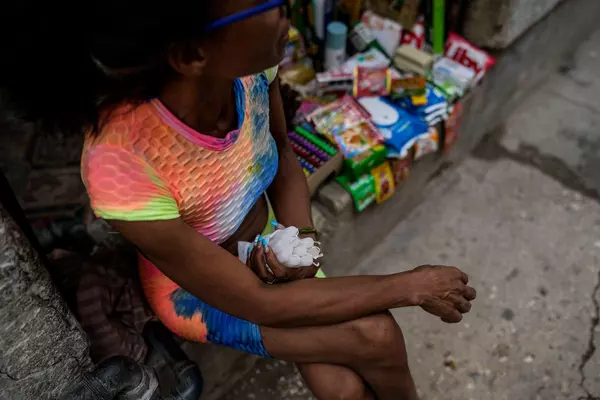The huge gap between the sums needed for developing countries to transition to renewable energy sources and adapt to climate change — estimated at $1 trillion in external funding per year — and current funding levels (half that, at most) has been a central focus of the COP27 climate conference.
Why it matters: Experts, activists and leaders from vulnerable countries have been warning of dire consequences if much more money doesn't flow much more quickly. But with countries and companies staring down a potential global recession, investment levels could actually decrease.
- Donor countries aren't willing or able to fill the gap. They're still struggling to cobble together the $100 billion in annual climate finance they promised by 2020.
- Aid budgets, particularly in Europe, have been stretched by the war in Ukraine, and more cutbacks are likely in an economic downtown, according to Ani Dasgupta, president and CEO of the World Resources Institute.
- The sums pledged so far by countries for various initiatives at COP27 have often been in the tens of millions, several orders of magnitude below what vulnerable countries need, Axios' Andrew Freedman reports.
- Hopes to fill the gap therefore lie largely with the private sector. Hence U.S. climate envoy John Kerry's new plan to fund investments in developing countries by selling carbon credits to corporate heavyweights.
While many big companies are genuinely committed to taking action on climate — in part due to pressure from their employees and customers — the sums they dedicate to philanthropy and burnishing their green credentials won't get you anywhere near $1 trillion per year, notes a senior executive from a Fortune 500 company who's attending COP27. "That's going to come from investments."
- Yes, but: "This conference is happening at a time when [interest] rates are going up in the U.S. and around the world," says the executive, who requested anonymity to speak candidly. "Capital is likely to flow out of developing countries and into safe havens like the U.S."
- "So while there's a lot of conversation here about the need to invest in green infrastructure in Africa and a variety of renewable energy projects, that's the context in which those investment decisions are going to be made."
- "This is something that can't just be put on the back-burner for a few years until we see where rates sort out. But it puts a premium on all the other factors that go into making those decisions." Those factors include efforts from development banks and other international actors to de-risk green infrastructure investments to draw in more cash.
State of play: Efforts to incentivize private sector investment are getting more ambitious and creative.
- They can also get complicated quickly, as the much-heralded but now-sputtering effort to fund South Africa's transition away from coal through a blend of public and private investment underscores.
- Still, similar initiatives for Indonesia and Vietnam are expected to be announced at COP27.
What to watch: With both public and private finance lagging behind what's needed, Barbados Prime Minister Mia Mottley presented a plan at COP27 — since endorsed by other leaders including French President Emmanuel Macron and, more cautiously, IMF chief Kristalina Georgieva — to revolutionize the roles of the IMF and World Bank to drastically increase the sums available for climate finance.
- Some close observers are watching whether Mottley's proposals get any traction during negotiations at COP27 or at the upcoming G20 summit, Andrew reports.







